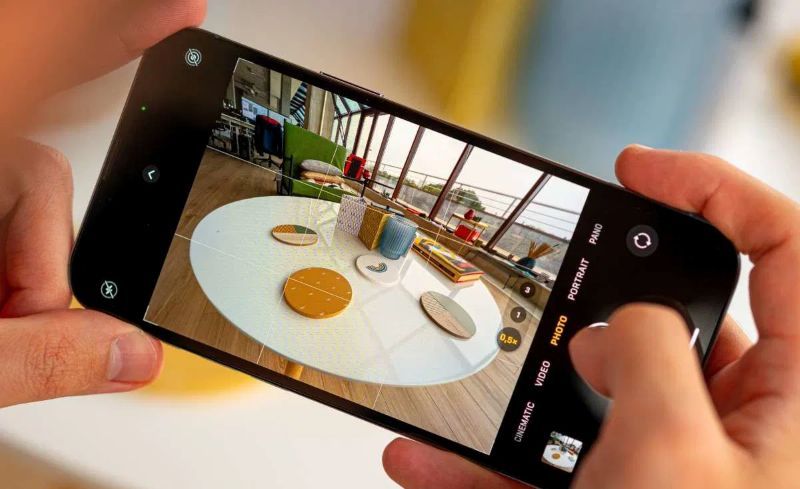

In today's digital age, smartphones have revolutionized the way we capture and share moments. Let's explore this topic in more detail with Tiny Fishing below, as we delve into the world of iPhone photography and uncover the secrets to taking professional-quality photos with your trusty mobile device. Whether you're a budding photographer or simply looking to enhance your Instagram game, mastering the art of iPhone photography can elevate your visual storytelling to new heights. In this comprehensive guide, we'll explore expert techniques, essential apps, and insider tips to help you unlock the full potential of your iPhone's camera and create stunning images that rival those taken with professional equipment.
Before diving into advanced techniques, it's crucial to familiarize yourself with your iPhone's camera capabilities. Modern iPhones boast impressive camera systems that have evolved significantly over the years. The latest models feature multiple lenses, including wide, ultra-wide, and telephoto options, each serving a specific purpose in capturing different types of shots. Additionally, iPhones now incorporate advanced computational photography, leveraging artificial intelligence to enhance image quality and produce stunning results even in challenging lighting conditions.
One of the most powerful features of iPhone photography is the ability to capture RAW images. RAW files contain unprocessed data from the camera sensor, providing greater flexibility for post-processing and editing. To enable RAW capture, navigate to your iPhone's Settings, tap on Camera, and select Formats. From there, you can toggle on the Apple ProRAW option for compatible iPhone models. This feature allows you to retain more detail in your images and gives you greater control over the final result.
Another key aspect of iPhone photography is understanding the various shooting modes available. Portrait mode, for instance, uses depth sensing technology to create a bokeh effect, blurring the background while keeping the subject in sharp focus. Night mode automatically activates in low-light conditions, allowing you to capture clear and bright images even in challenging environments. Familiarizing yourself with these modes and when to use them can significantly improve the quality of your photos.
Read more: iPhone Camera Tips for Stunning Photos
Composition is the foundation of any great photograph, regardless of the equipment used. The rule of thirds is a fundamental principle in photography that can dramatically improve your iPhone shots. To enable the grid feature on your iPhone, go to Settings, tap on Camera, and toggle on the Grid option. This will overlay a 3x3 grid on your camera screen, helping you align your subjects along the intersecting lines for more visually appealing compositions.
When composing your shots, pay attention to leading lines, symmetry, and framing. Leading lines are natural or man-made lines that guide the viewer's eye through the image, creating a sense of depth and direction. Symmetry can create striking and visually pleasing images, especially when capturing architecture or reflections. Framing involves using elements in the foreground to create a natural frame around your subject, adding depth and context to your photos.
Lighting plays a crucial role in photography, and understanding how to work with available light can make a significant difference in your iPhone photos. The golden hour, which occurs shortly after sunrise and before sunset, provides soft, warm light that's ideal for outdoor photography. During this time, experiment with backlighting to create dramatic silhouettes or side lighting to add depth and texture to your subjects.
When shooting in challenging lighting conditions, such as high contrast scenes or low light environments, take advantage of your iPhone's HDR (High Dynamic Range) feature. HDR combines multiple exposures to create a single image with improved detail in both highlights and shadows. To enable HDR, go to Settings, tap on Camera, and toggle on Smart HDR.
Indoor photography can be challenging due to limited light sources, but with the right techniques, you can create stunning images using natural light. Position your subject near a window to take advantage of soft, diffused light. Experiment with different angles to find the most flattering light for your subject. If the light is too harsh, you can use a sheer curtain or white sheet to diffuse it further, creating a softer, more even illumination.
For food photography or still life shots, consider using a reflector to bounce light back onto your subject and fill in shadows. You can create a simple DIY reflector using a white foam board or even a sheet of white paper. This technique can help you achieve more balanced lighting and bring out the details in your subject.
Your iPhone's camera app offers a wealth of features and settings that can help you capture professional-quality photos. One of the most powerful tools at your disposal is the exposure and focus control. To adjust these settings, simply tap on the area of the frame you want to focus on, and then slide the sun icon up or down to adjust the exposure. This allows you to fine-tune the brightness of your image and ensure that your subject is properly exposed.
The iPhone's burst mode is an excellent feature for capturing fast-moving subjects or ensuring you get the perfect shot in dynamic situations. To use burst mode, simply press and hold the shutter button (or volume up button) while the camera app is open. Your iPhone will capture a rapid series of photos, allowing you to choose the best one later.
For more control over your camera settings, consider using a third-party camera app like Halide or ProCamera. These apps offer advanced features such as manual focus, shutter speed control, and ISO adjustment, giving you greater flexibility in challenging shooting situations.
Modern iPhones come equipped with a variety of advanced camera modes that can help you capture unique and creative shots. The panorama mode, for instance, allows you to create sweeping wide-angle images by slowly panning your iPhone across a scene. This mode is particularly useful for capturing expansive landscapes or architectural shots.
Time-lapse mode is another powerful tool for creating dynamic and engaging content. This mode captures a series of photos over an extended period and compresses them into a short video, allowing you to showcase the passage of time in a visually striking way. Time-lapse can be particularly effective for capturing sunsets, bustling cityscapes, or natural phenomena like blooming flowers.
For those interested in underwater photography, newer iPhone models offer impressive water resistance. While it's not recommended to submerge your iPhone without proper protection, you can capture stunning underwater shots in shallow water or with the help of a waterproof case. Experiment with the ultra-wide lens to capture the expansive underwater world, and use the volume buttons as shutter release to avoid accidental touches on the screen.
Read more: Hidden iPhone Camera Features You Probably Missed
Post-processing is an essential part of creating professional-looking photos with your iPhone. The built-in Photos app offers a range of editing tools that allow you to adjust exposure, contrast, saturation, and more. To access these tools, open a photo in the Photos app, tap Edit, and then explore the various options available under the adjustment icon (three slider bars).
For more advanced editing capabilities, consider using third-party apps like Snapseed, VSCO, or Adobe Lightroom Mobile. These apps offer powerful tools for fine-tuning your images, including selective adjustments, healing brushes for removing unwanted elements, and a wide range of filters and presets to achieve different looks.
When editing your photos, it's important to maintain a natural look and avoid over-processing. Start with subtle adjustments to exposure and contrast, and then fine-tune the colors and tones to enhance the mood of your image. Pay attention to the highlights and shadows, ensuring that you retain detail in both the bright and dark areas of your photo.
As you become more comfortable with editing, you may want to develop a consistent editing style that reflects your personal aesthetic. This can involve creating custom presets or developing a signature color palette that you apply across your images. Consistency in editing can help create a cohesive look for your photography portfolio or social media feed.
Experiment with different editing techniques to find what works best for your style of photography. For instance, if you primarily shoot landscapes, you might focus on enhancing colors and bringing out details in the sky and foreground. For portrait photography, you might prioritize skin tone adjustments and subtle retouching techniques to create flattering, natural-looking images.
Remember that editing is a creative process, and there's no one-size-fits-all approach. Don't be afraid to push the boundaries and try new techniques to develop your unique style. However, always strive to maintain the integrity of the original image and avoid creating unrealistic or overly manipulated results.
In conclusion, mastering the art of iPhone photography requires a combination of technical knowledge,